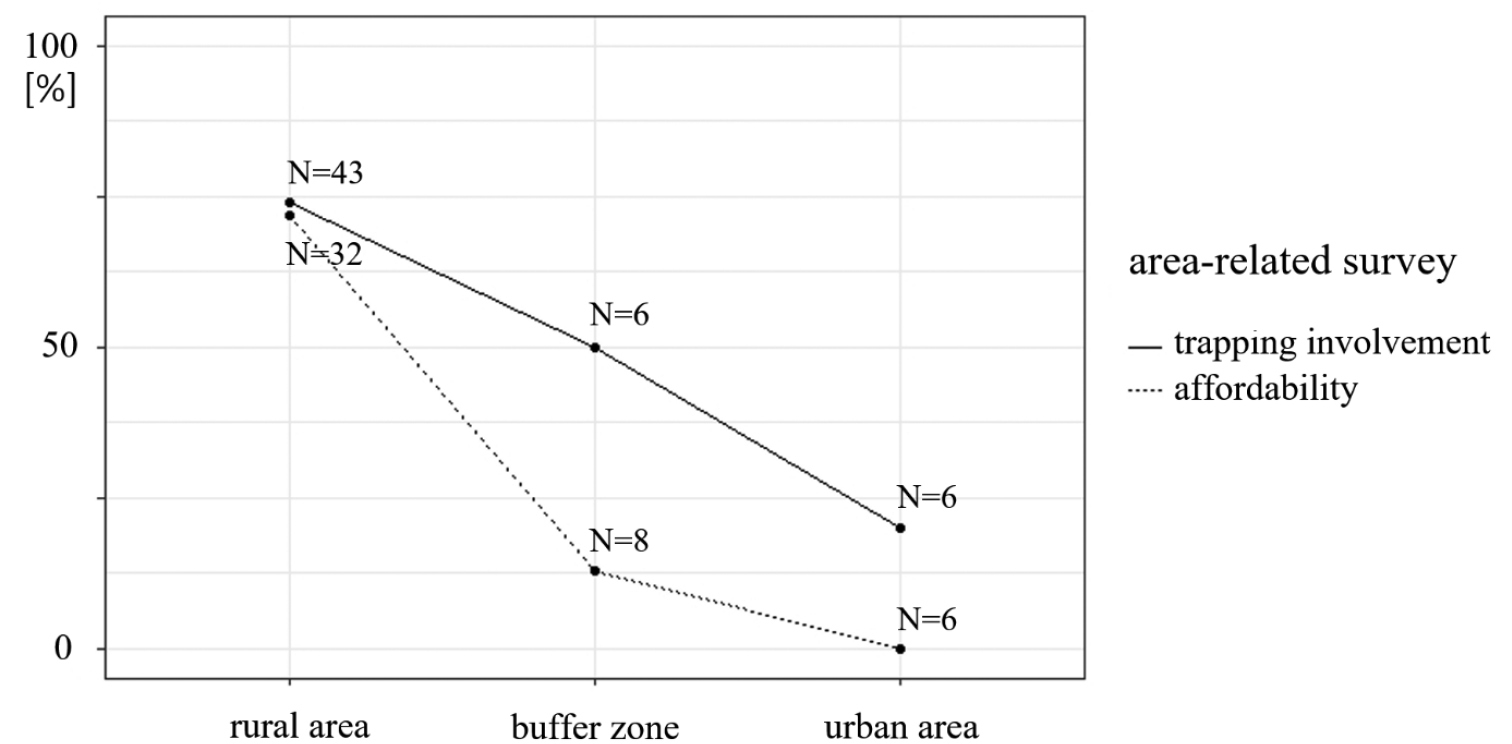
|
||
|
Households along an urbanization gradient (rural, transition and urban area) that depicts their involvement in wildlife trapping activities, and those that claimed rate wild meats on the market more affordable than meats from a farmed source (N = 55, 46). Trapping involvement of households in rural areas differs significantly from that in the urban area (Fisher’s exact test, P = 0.032). Regarding wild meats’ affordability, households in rural areas differ significantly from the other areas (Fisher’s exact test, P=5.928-5), with a difference to transition areas by P = 0.007 and P = 0.005 to the urban area. Data was drawn from the respective interviews. |